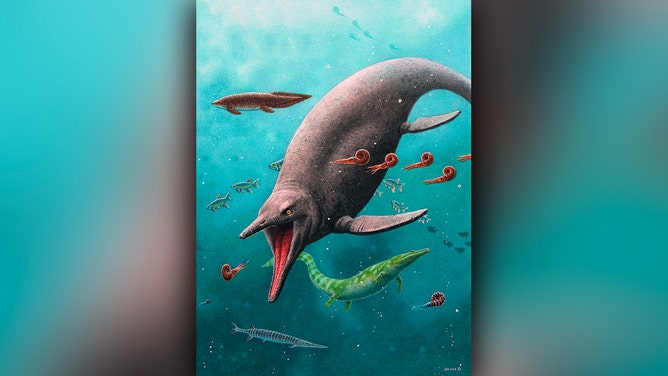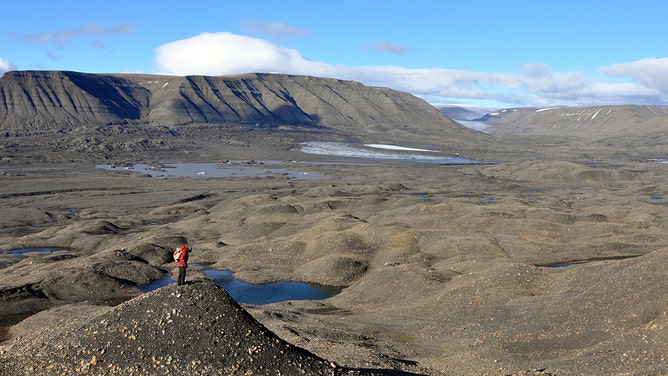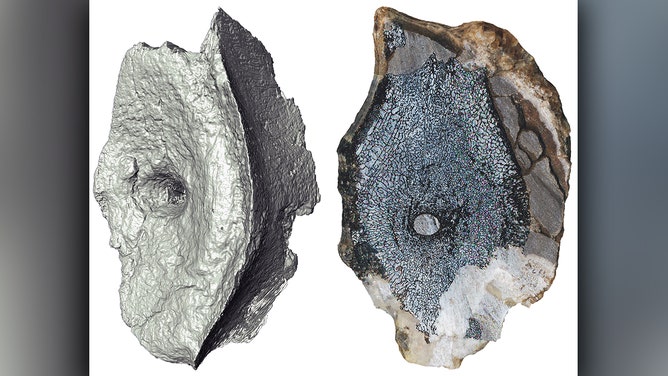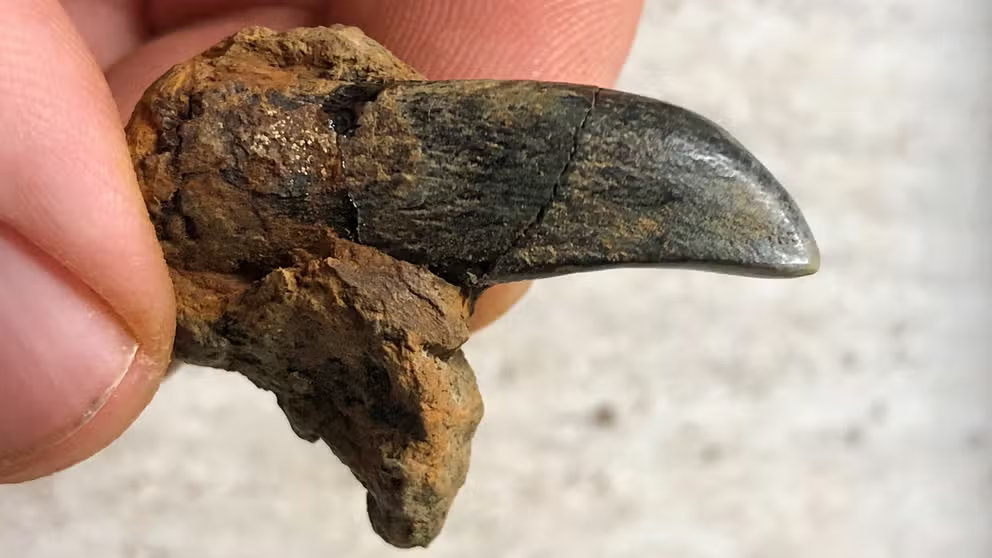Oldest sea reptile remains from 2 million years ago found on Arctic island
Swedish and Norwegian paleontologists found fossils of the earliest known ichthyosaur on Spitsbergen after nearly 190 years of searching.
How kids at Dinosaur Park are finding bones with help from the rain
Located in Laurel, Maryland, Dinosaur Park is an outdoor laboratory where paleontologists, park visitors, and the weather combine forces to discover hundreds of fossils.
SPITSBERGEN, Norway – The remains of the earliest known ‘fish-lizard’ from the Age of Dinosaurs have been found on a remote Arctic island.
Swedish and Norwegian paleontologists found fossils of the earliest known ichthyosaur on Spitsbergen after nearly 190 years of searching.
'I COULDN’T BELIEVE WHAT I WAS LOOKING AT': RECORD-BREAKING DINOSAUR FOOTPRINT UNEARTHED IN ENGLAND

Reconstruction of the earliest ichthyosaur and the 250-million-year-old ecosystem found on Spitsbergen.
(Esther van Hulsen)
Research conducted with The Museum of Evolution at Uppsala University helped identify the bony fish and ‘crocodile-like’ amphibian bones, together with its 11 articulated tail vertebrae.
According to the university, ichthyosaurs were an extinct group of marine reptiles whose fossils have been recovered worldwide. They were among the first land-living animals to adapt to life in the open sea about 250 million years ago. They later evolved their body shape similar to modern whales.
The remains were found in limestone boulders during a 2014 expedition to Flower’s valley along the southern shore of Ice Fjord in western Spitsbergen. They were later shipped back to the Natural History Museum at the University of Oslo for future study.
DISCOVERY OF 256 FOSSILIZED TITANOSAUR EGGS SHEDS NEW LIGHT ON DINOSAUR SPECIES

Fossil-bearing rocks on Spitsbergen that produce the earliest ichthyosaur remains.
(Benjamin Kear)
"Unexpectedly, these vertebrae occurred within rocks that were supposedly too old for ichthyosaurs," the university said in a news release this week. "Also, rather than representing the textbook example of an amphibious ichthyosaur ancestor, the vertebrae are identical to those of geologically much younger larger-bodied ichthyosaurs, and even preserve internal bone microstructure showing adaptive hallmarks of fast growth, elevated metabolism and a fully oceanic lifestyle."
Geochemical testing of the surrounding rock confirmed the age of the fossils at approximately two million years.
FOSSILS SHOW PRIMATE-LIKE CREATURES LIVED IN ARCTIC 52 MILLION YEARS AGO

Computed tomography image and cross-section showing internal bone structure of vertebrae from the earliest ichthyosaur.
(Oyvind Hammer and Jorn Hurum)
"Given the estimated timescale of oceanic reptile evolution, this pushes back the origin and early diversification of ichthyosaurs to before the beginning of the Age of Dinosaurs; thereby forcing a revision of the textbook interpretation and revealing that ichthyosaurs probably first radiated into marine environments prior to the extinction event," the university said.
According to paleontologists, fossils of the ichthyosaur's most ancient ancestors are still awaiting discovery in even older rocks on Spitsbergen and elsewhere in the world.
